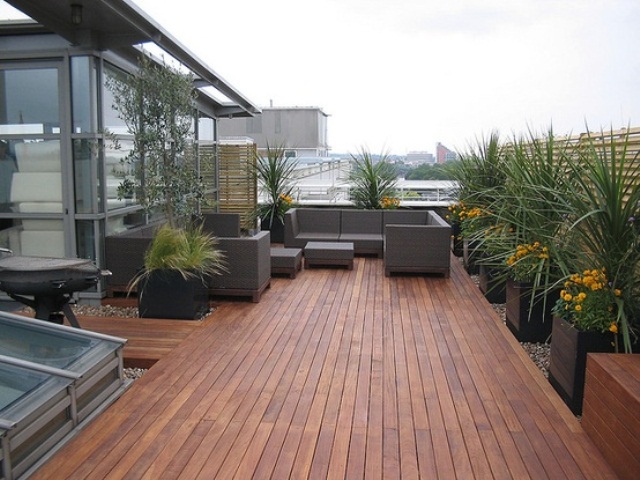You have many options available to enable you to grow a vivacious and colorful organic garden of your very own. You just need to learn the methods and use them.
If you are planting vegetables, choose varieties that don't require processing in order to keep. For example, sweet potatoes and onions will keep for months as long as they are kept cool and dry, without any additional work on your part. This reduces the amount of time you have to spend after harvesting.
To maximize your enjoyment out of your garden plant a variety of plants. The same old will get full and boring and you may out of boredom end up neglecting your garden. By planting a variety you will ensure that you remain interested and as a bonus it will be far prettier.
When removing and replanting perennials, it is important to replenish the soil as well. If you remove a large number of perennials, and then replant them without adding additional compost and soil, the bed will be lower, reducing drainage and air circulation. Also, the compost will replace nutrients that have been used up by previous growing seasons.
Before settling on your garden space, visit it at multiple times throughout the day. You need to understand what type of light the spot gets on an hourly basis, as it can have ramifications on the plants you can grow and your ability to grow anything at all! If the location receives no direct sunlight, reconsider your options.

Use compost that is homemade and free. Making a habit of using leaves, pulled plants and other organic bits, will create a rich and nutritious compost for the garden that is free and organic. Additionally, if an enclosed composter is utilized, kitchen scraps and garbage can be thrown in a mix for an excellent compost that is free also.
Weed the garden often and early. Plan on a weeding schedule for the garden at least three times. The first should be five to seven days after sowing, and again seven to ten days after that. The third time should be three to four weeks after planting, by this time the plants should be rooted well enough to add mulching and sufficient leaves to shade the surface.
To make your own miniature greenhouse, simply cover a pot with an old plastic bag. This will mimic the humid environment that allows plants inside a greenhouse to thrive. If you'd also like to protect your plant from the weather, build a dome out of a sturdy plastic and place it atop the plant.
To make the most of the water you use, be sure to water your plants first thing in the morning. Doing this makes your water less likely to evaporate, and allows foliage to dry quickly. This reduces the risk of many common diseases, and will help your plants grow to be strong and healthy.
Keep an eye on your lilies. Unfortunately, lilies are prone to virus disease, such as lily mosaic. If you https://www.tumblr.com/search/terrace%20decor can, purchase bulbs that are guaranteed 'virus-free'. During the growing season, keep a sharp look out for any aphids, as they spread the disease. Make sure to spray with insecticidals soap at the very first sign of them.
To have the best flower garden pick plants that bloom at different times of the growing season. It is possible to find varieties of plants and flowers that bloom from January until November depending on where you live. By planting plants that peak at different times of the year you can ensure that there is always color and life in your yard.
When watering plants use recycled water, but avoid re-using water from sources such as baths, washing machines, or dishwashing. These water sources may contain harmful chemicals that can be absorbed into your vegetables such as nitrates and phosphates. This water may even contain pathogens that could harm you or your plants.
Plant your own seeds to guarantee organic produce. Sowing your own vegetable seeds gives you the comfort and assurance that your produce has been grown organically from seed to table. Choose plants that are easy to germinate such as broccoli, cabbage, basil and tomatoes. Find out the best time of the year to sprout your chosen produce.
If you are new to gardening, start with plants that are natural to your area. Natural plants will be easier to grow. They will thrive in the natural soil of your area, and appreciate the weather conditions you are faced with too. Ask for information on native plants at your home and garden center.
If you don't have a big yard, or any yard at all, you can still grow great organic produce in containers. Most vegetables, other than some root vegetables, grow just as well in pots as they do in the ground. There are also many varieties which have been bred to do well in containers.
Integrate low-growing strawberries into your yard's landscape. Instead of setting aside fruit plants in a separate area, choose strawberries, such as alpine varieties, to use a ground cover that doubles as a fruit garden. These spreading, low-growing plants look attractive and grow well in areas that have a lot of sun.
Keep kitties looking for a bathroom out of your garden with natural deterrents such as black pepper and orange peels. You can also cover the ground around your plants with chicken wire, or purchase a pack of inexpensive wooden chopsticks and poke them in the ground haphazardly. These ideas can protect your vegetables and herbs from being contaminated by toxoplasmosis, a parasite that can be especially harmful to pregnant women.
These tips should have given you some much needed insight on http://www.yelp.fr/biz/amenager-ma-maison-rouen where to start and how to begin growing your own personal organic garden. These tips were thoughtfully compiled to help the new organic gardener learn the basics and some other cool techniques that are simple enough to use for their garden.

